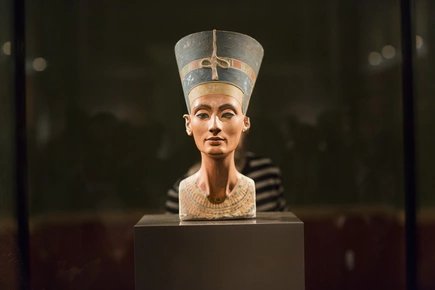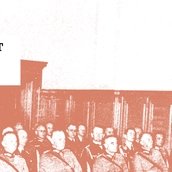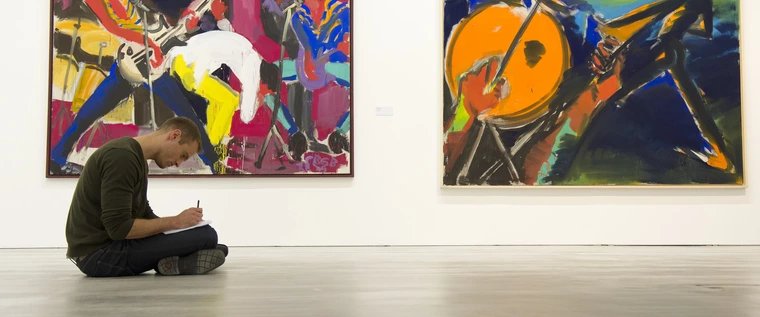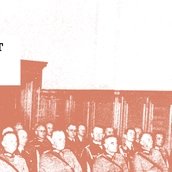
The artist Paul Gurk during the Nazi dictatorship
The writer, painter and Kleist Prize winner Paul Gurk led a reclusive life, living in Berlin Wedding from 1936 onwards. During the Nazi dictatorship, many of his works remained unpublished; the novel "Tresoreinbruch" (1935) was banned.
However, Paul Gurk's relationship to National Socialism was contradictory from the very beginning. His life and work reflect the inner conflict of many artists who remained in Germany despite the dictatorship.
The Mitte Museum preserves documents and books from the estate of Paul Gurk (1880-1953) and his partner Erna Schallock (1886-1943) as well as works of art by the artist. A selection of these are presented in the exhibition and provide an authentic insight into his life.
Gurk was an outsider in the literary world. His extensive work eluded the literary trends of modernism. In the urban novel "Berlin - A Book of the Dying of the Soul" (1934), he portrayed people whose way of life is threatened by progress. In the dystopia "Tuzub 37: The Myth of Grey Humanity or of the Number 1" (1935), he addressed environmental destruction and totalitarianism.
In the post-war period, Paul Gurk attempted to join the new literary scene. The last years of the author's life were characterized by poverty and great loneliness. He was buried at Dom-Friedhof II, an honorary burial site in Berlin from 1987 to 2009. A memorial plaque has commemorated the writer at his last home at Afrikanische Straße 144b since 1970.
The exhibition offers the chance to rediscover the "forgotten writer". His themes - life in the big city, criticism of a technologized society and warnings about environmental destruction - are more topical than ever.
Opening
To mark the opening of the exhibition, Christoph Haacker will read from works by Paul Gurk. As a publisher, he publishes his "Collected Works" - edited by Magnus Chrapkowski as well as first editions of unpublished novels and stories.
Thursday, July 17, 6 p.m
No registration required, admission free.


